
Raw Materail:T8, T10, 42CrMo, 5CrMnMo, Cr2MoV and other high-quality tool steels and alloy tool steels.
Heat treatment hardness: HRC50±2.
Standard length: 835mm, 800mm, 550mm
Segmentation:
* Segmentation :
* Upper Punch: 100 (left), 10, 15, 20, 40, 50, 200, 300, 100 (right) = 835mm
* Bottom Die: 10, 15, 20, 40, 50, 100, 200, 400 = 835mm
* Segmentation 2
* Upper Punch: 100 (left), 10, 15, 20, 40, 50, 165, 300, 100 (right) = 800mm
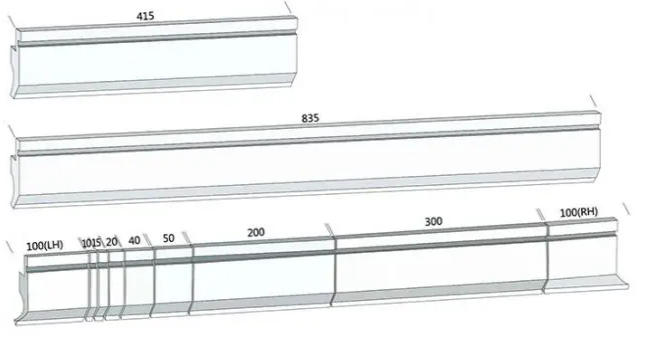
For choose your press brake punch and die ,you should know your press brake punch tang and die tang.
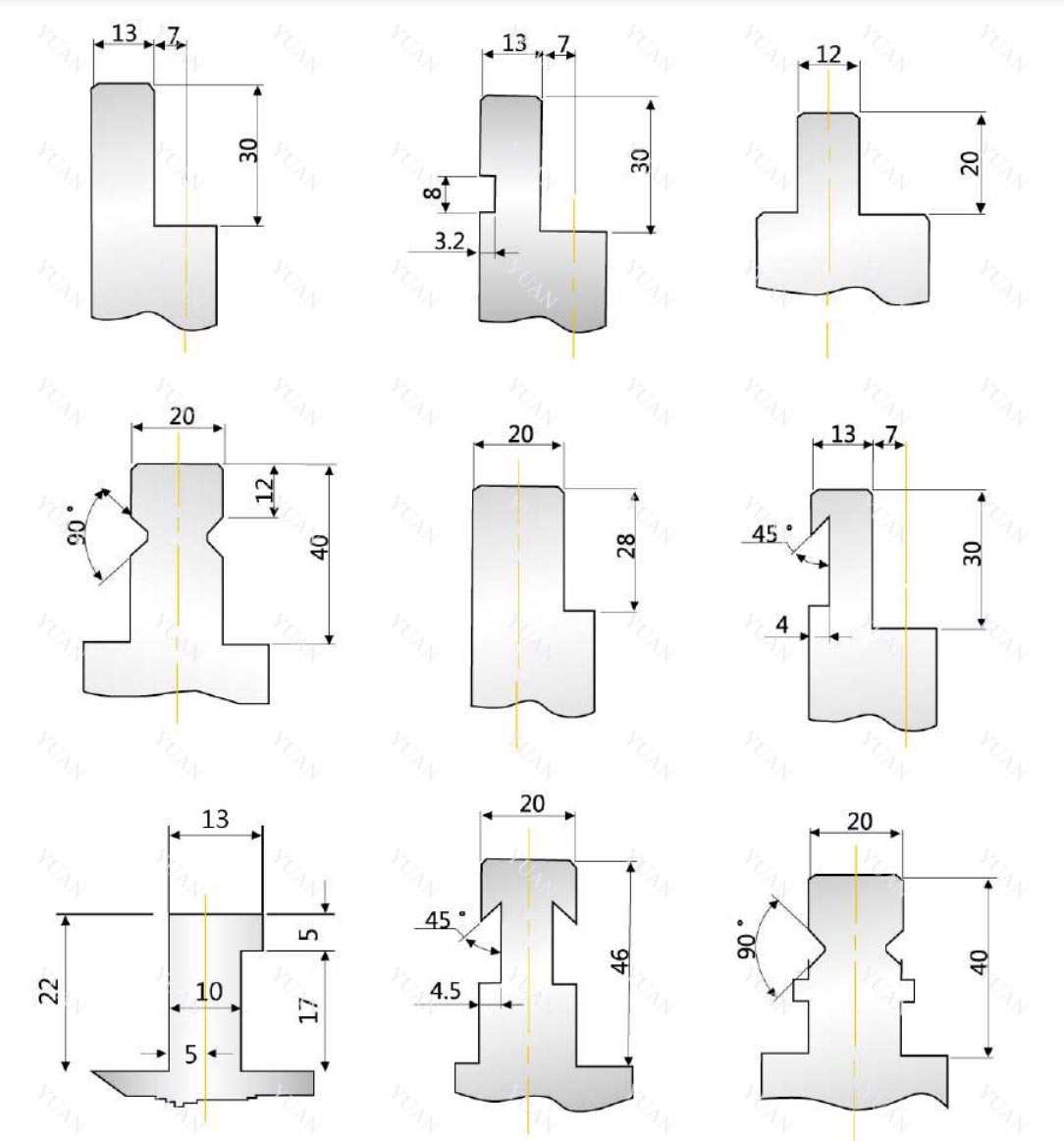
Bending machine molds are divided into standard molds and special molds in terms of usage. The general standard upper mold blade angle is 30 degrees (actual angle 26-28 degrees), 60 degrees, 78-88 degrees, etc., while the lower mold groove angle is approximately 30 degrees, 45 degrees, 60 degrees, 80-90 degrees, etc.
If the upper mold of the bending machine is divided by shape, it can be divided into sharp knife mold, arc mold, bending knife mold, and forming mold. Usually, sharp knife molds are usually 30 degrees or 60 degrees, and occasionally there are special designated angles such as 45 degrees or 55 degrees. The arc mold is mainly designed based on the diameter and length of the arc, and so on. Bender molds are mainly used to avoid some U-shaped workpieces or multiple bends. The most complex type is the forming mold, which can be either integrated or combined. Generally speaking, combined molds are designed, manufactured, and used together with the upper and lower molds. In terms of production cost, the manufacturing cost of integrated forming molds is relatively higher (especially for large-sized molds) The accuracy is also difficult to control. Combination molds have great advantages in large-sized molds and complex graphic molds.
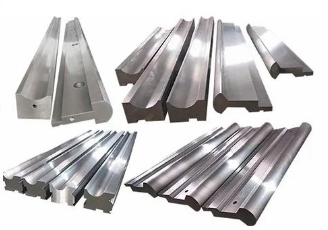
The bending machine mold can be divided into single mold and multi-function mold according to its function. The so-called single mold can only make a single type of workpiece, while the multi-functional mold can process different types of workpieces. Some can be disassembled and assembled, which is also called composite mold, such as segment difference mold and forming mold.
The lower mold of the bending machine can be roughly divided into single V mold, double V mold, and multiple V molds based on the number of mold slots. Single V mold and double V mold, as the name suggests, refer to a surface with only one or two mold grooves, which are commonly seen in CNC bending machines. Their accuracy is also relatively high because they have a fixed reference, and we also refer to them as concentric molds, which can be interchanged at will. The multi V lower mold, on the other hand, is mostly a square mold, with several grooves of varying sizes on its four surfaces. The advantage lies in the large number of grooves, which can be used for bending various thicknesses of sheet metal.
Nowadays, due to the continuous progress of society, the requirements for products are also constantly increasing, so the various requirements for bent products and materials are also constantly improving. The lower molds of bending machines are also constantly developing. Embedded lower molds, non indentation lower molds, and adjustable opening lower molds have been widely used in various industries.
1. The embedded lower mold is mainly used to improve the utilization rate of mold materials or for bending special materials.
2. The types of non indentation lower molds include ball type non indentation lower molds, flip plate non indentation lower molds, and Uni glue non indentation lower molds. The non indentation lower mold mainly avoids scratches, scratches, and indentations on the material surface.
3. Adjustable lower mold with adjustable opening, available in insert type, opposite insert type, wedge type, and rack type. The adjustable opening lower mold not only improves the utilization rate of mold materials, but also greatly improves work efficiency, reduces the time and labor intensity of mold replacement.
Types of Punch and Die:
1.Press Brake Acute Punch:
Features:
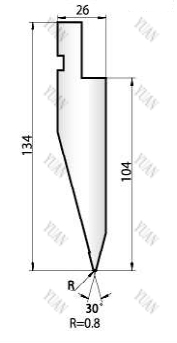
1. The applicable range is between 30deg;~180deg;
2. Use the small angle of the tool tip to avoid extraction holes and other workpieces that need to be avoided.
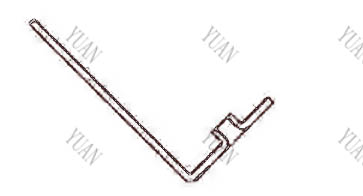
3.It is used for deep insertion and bending. The applicable bending angle for deep insertion is as shown in the figure below.
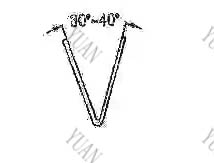
2.Press Brake Sash Punches
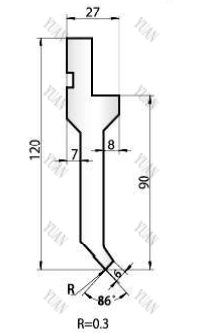
Features:
1. Suitable for bending symmetrical products, and can be avoided in both front and rear directions.
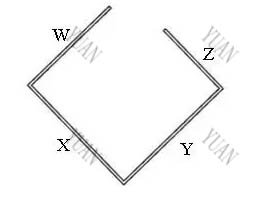
2. When X min>10mm, W can increase in proportion to the X direction.
3. When 0<Y<20mm, Z=0.
4. When Y>20mm, the Y and Z directions can increase in proportion.
5. The bendable length in the W direction is greater than the bendable length in the Z direction.
3.Press Brake Narrow Punches:
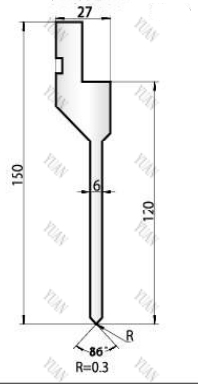
1. Suitable for bending symmetrical products, it can be avoided in both front and rear directions, and the bending opening can be as small as 6mm.
2. When X<50mm, Y<50mm, W can increase in proportion to the X direction
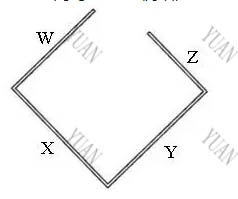
4.Acute Punches:
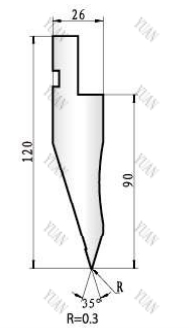
Features:
1.Suitable for bending angles between 45deg~180deg;
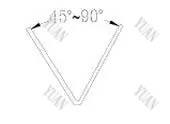
2. Use the small angle of the tool tip to avoid extraction holes and other work pieces that need to be avoided.
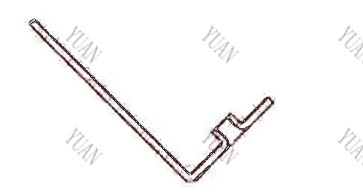
5.Radius Punches:
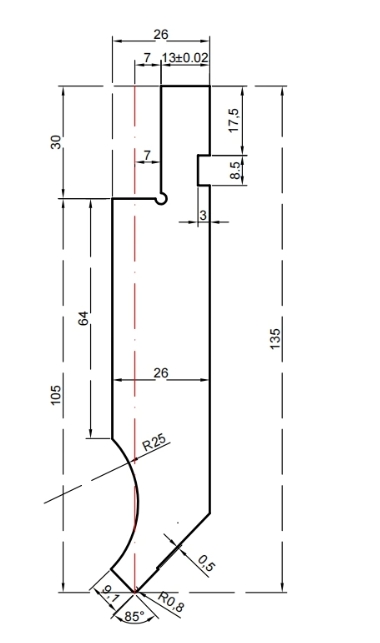
The arc top punches is usually used for bending the upper cover, and is sometimes used for shaping the workpiece with a small angle.
6.Combined Radius Punches:
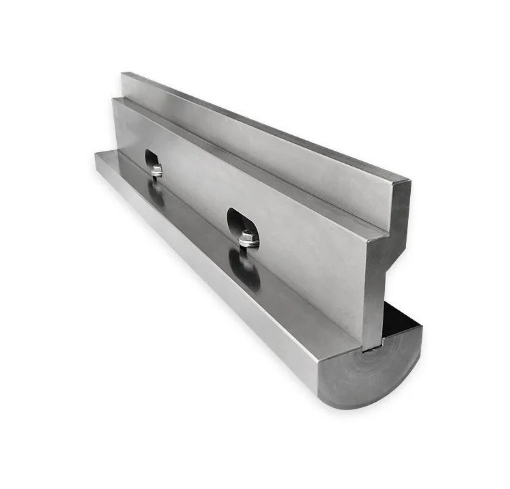
This arc knife is mainly used to bend the inner R arc angle. The lower die of the arc knife is matched with the corresponding V groove.
How to choose the V open according to raw materail steel thickenss:
Plate thickness (mm) | ≤0.6 | 1.0 | 1.2 | 1.5 | 2.0 | 2.5 | 3.0 |
V open width (mm) | 4 | 6 | 8 | 10 | 12 | 16 | 18 |
L shape bending and Z shape bending:
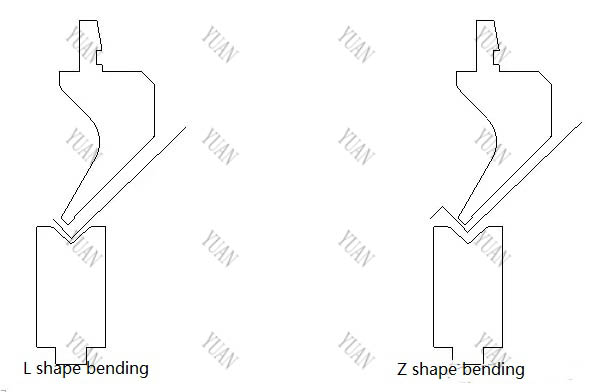
Min Bendable Length:
L shape bending:Min bending length=V width/2+thickness
Z shape bending:Min bending length=Vwidth/2+2+thickness
Plate thickness (mm) | ≤0.6 | 1.0 | 1.2 | 1.5 | 2.0 | 2.5 | 3.0 |
L shape min bending length | 4 | 4.5 | 5.0 | 6.0 | 8.0 | 10.5 | 12.0 |
Z shape min bending length | 5 | 5.5 | 6.0 | 8.0 | 10.0 | 13.0 | 15.0 |
U Shape Bending:
For U shape bending ,it needs to use goosneck punches.There are 3 types of goosneck punches
small goosneck middle goosneck big goosneck
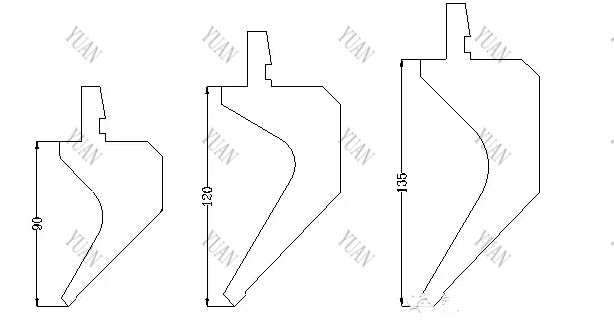
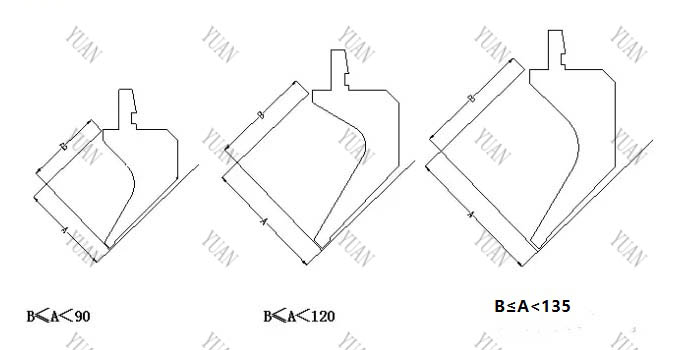
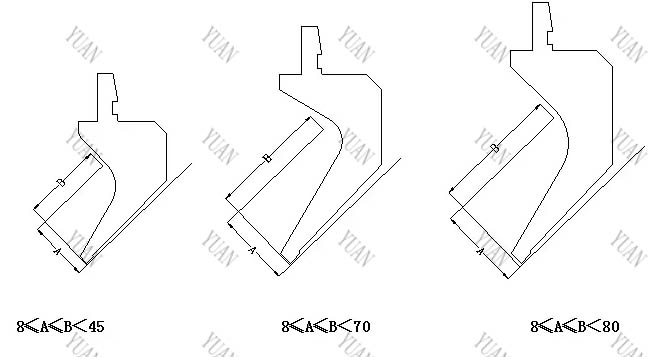
Muti V block die:
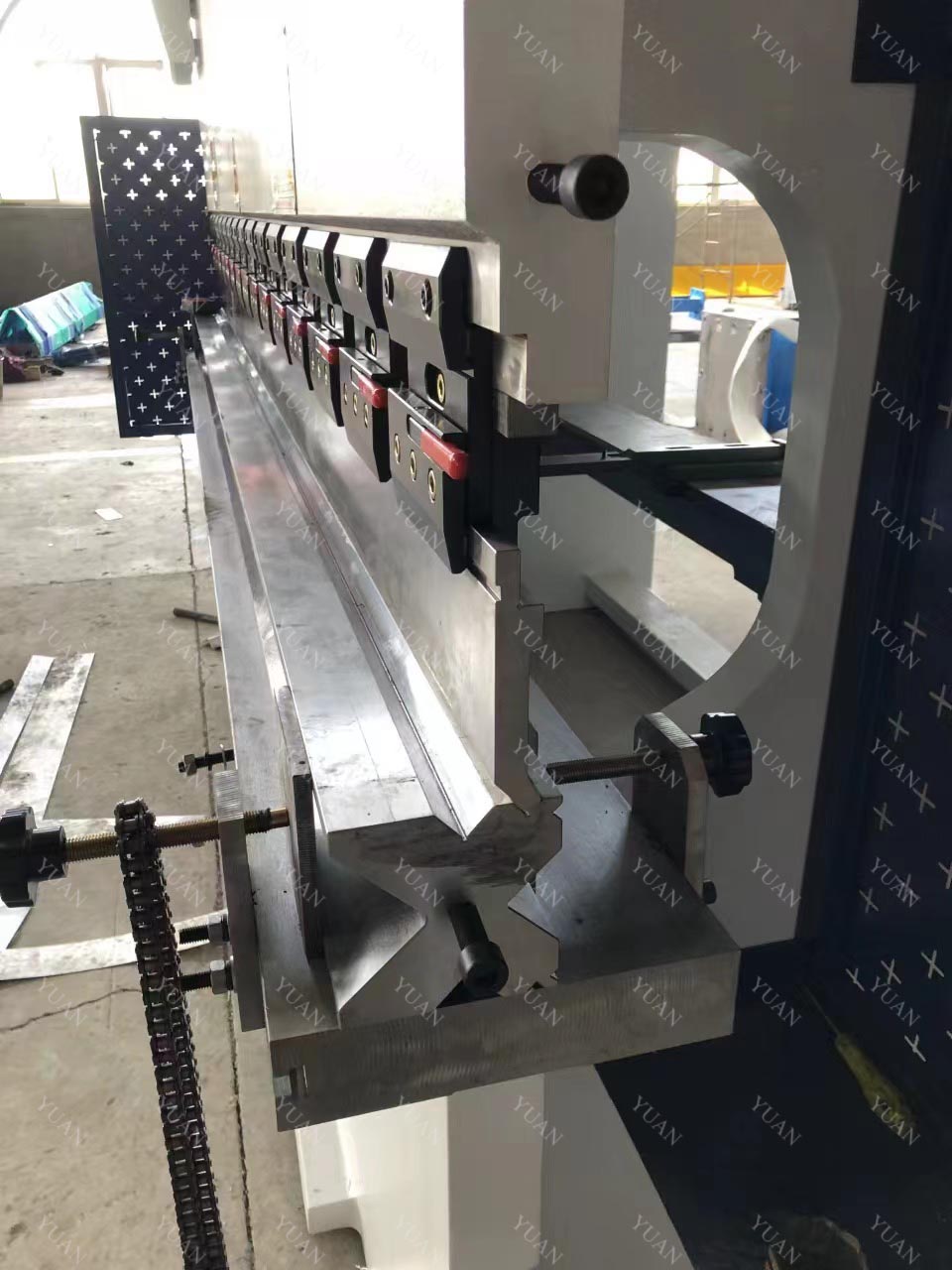 H
H
single V die
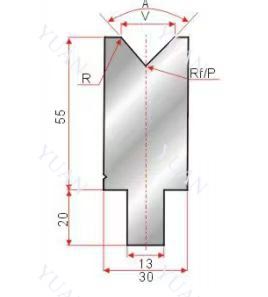
double V die
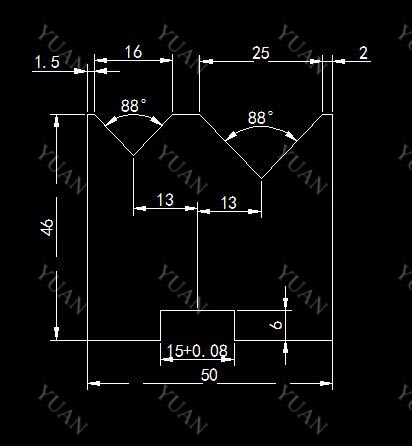
Z Profiles Bending Die
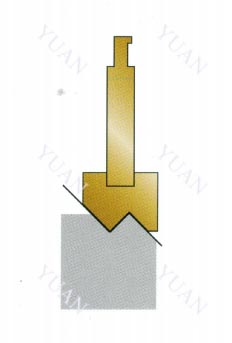

Used for Z folding that cannot be folded with common folding knives H=1~10mm
Hat Profiles Bending Tool
Trapezodial Profiles Press Brake Bending Tool
Punch and die for light pole
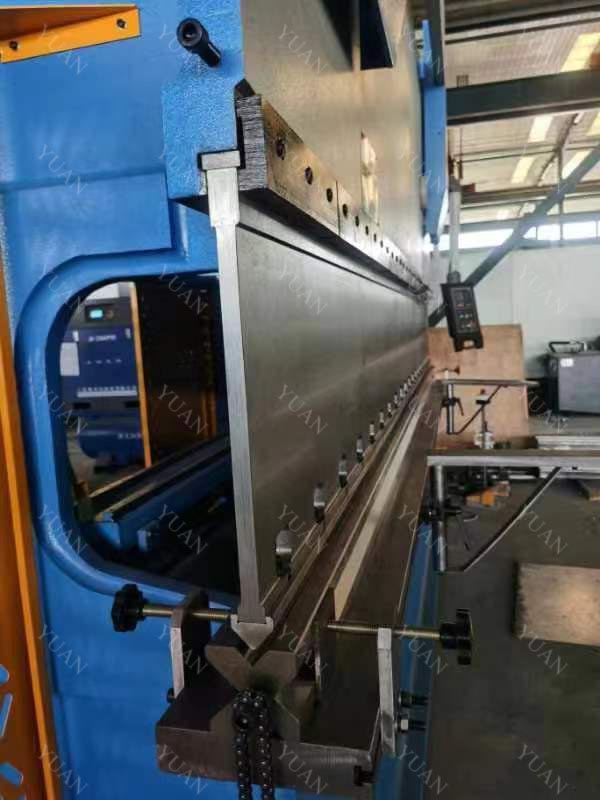
Hinges and Curls Bending Punch
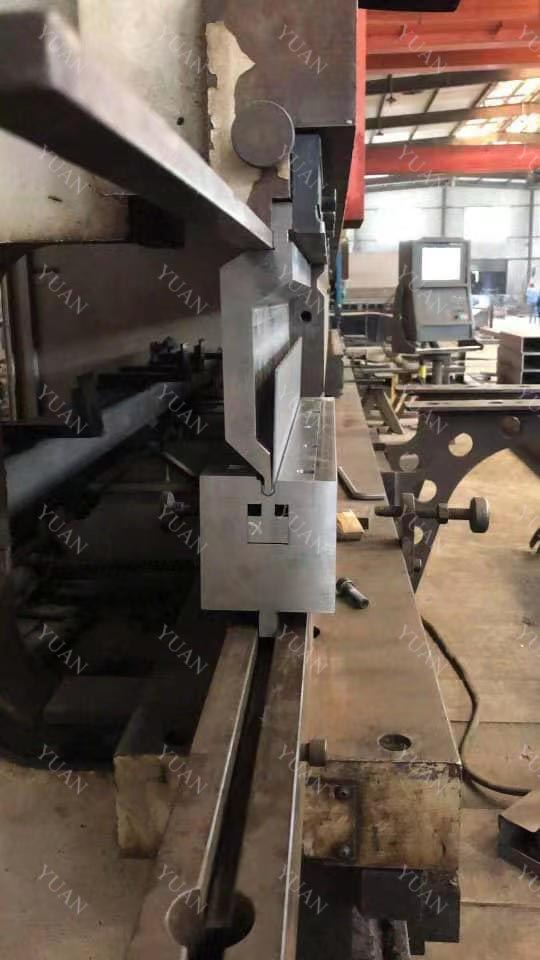
Hemming Punch and Die
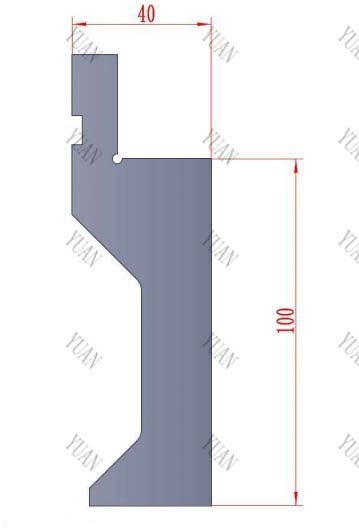
1.The picture below is a schematic diagram of the shape of the product after bending, reverse folding and flattening. All similar shapes can be bent. It must be used in conjunction with the 30mm upper and lower molds.

2.It can also be used for processing methods such as pressing, riveting, and shaping.
It needs to match with 30 degee acute punches to bend first bends.
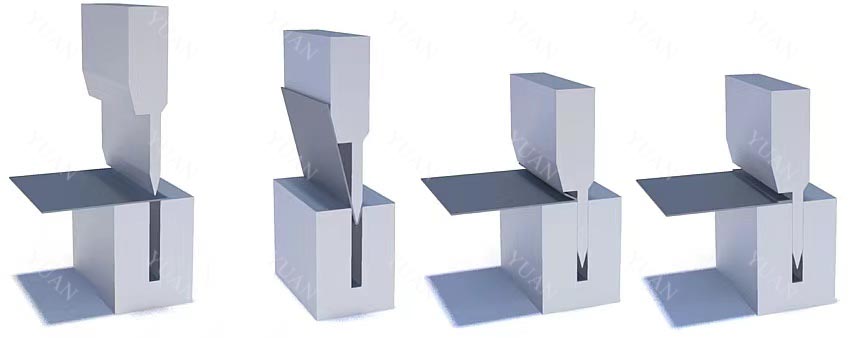
Louver punch and die